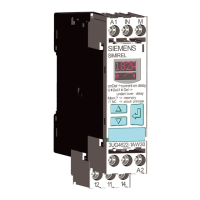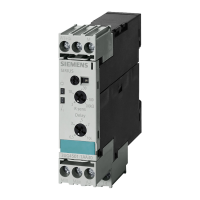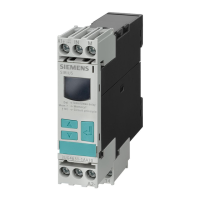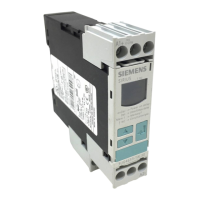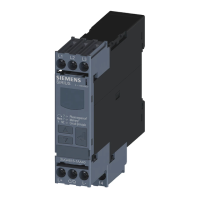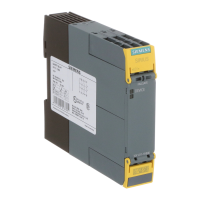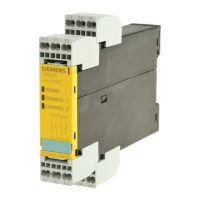Current monitoring principle
The monitoring relays monitor an AC load current which ows through the device terminals
depending on whether monitoring has been set to check for overshoot or undershoot, or
window monitoring.
There are two current monitoring principles:
• Apparent current I
s
• Active currentI
p
Whereas apparent current monitoring is primarily used in the rated torque range or for overload,
active current monitoring can be used to observe and evaluate the degree of loading across a
motor's entire torque range.
FRV˳
,>$@
,
S
,
V
[FRV˳
,
V
FRV˳
0>@
① Strong change in cos φ
② Strong change in apparent current
cos φ Power factor
I [A] Current
M [%] Torque as a % of the rated torque
I
p
Active current
I
s
Apparent current
Figure B-2 Load current monitoring diagram (shown using the example of a real motor)
The diagram shows that it only makes sense to use the power factor cos φ to monitor the rated
current up to approx. 70%. At a higher rated current the change in the power factor is too slight
to produce measured values of any signicance. In contrast, the monitoring quality of the
apparent current I
s
increases along with the torque, in other words as the rated current rises. It
is for this reason that monitoring of the apparent current is primarily used if a load needs to be
protected against overload. Integrated monitoring from no-load operation up to overload is only
possible by monitoring the active current I
p
, the product of power factor and apparent current.
Note
Determining the thresholds in practice
You can determine the thresholds by operating the motor at the load limits, for example. You can
then read the thresholds as the up-to-date measured values o the display of the monitoring
relay.
Parameters
SIRIUS 3UG4 / 3RR2 monitoring relay
Equipment Manual, 07/2021, NEB927043002000/RS-AD/005 287
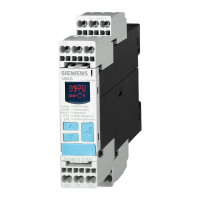
